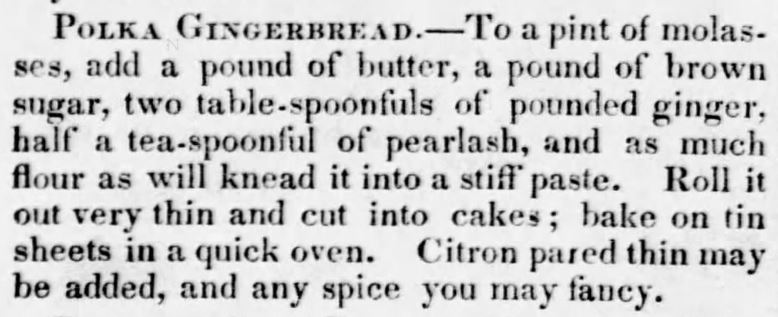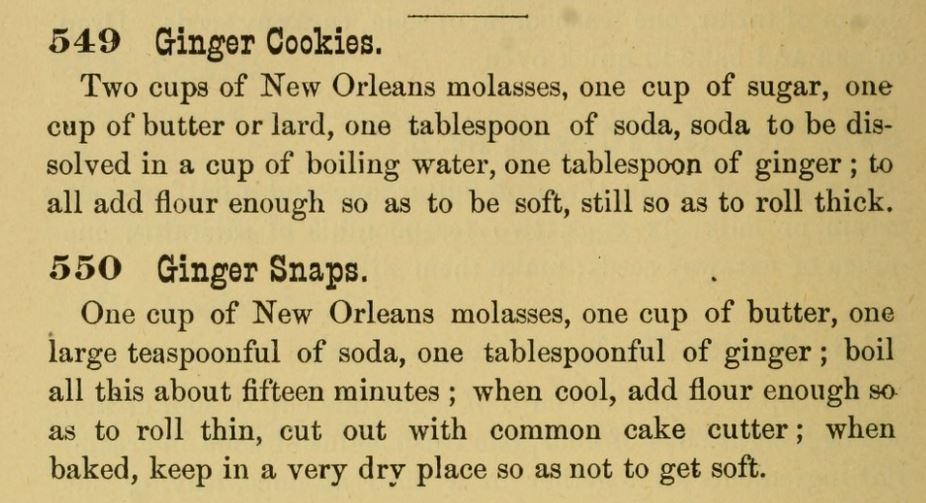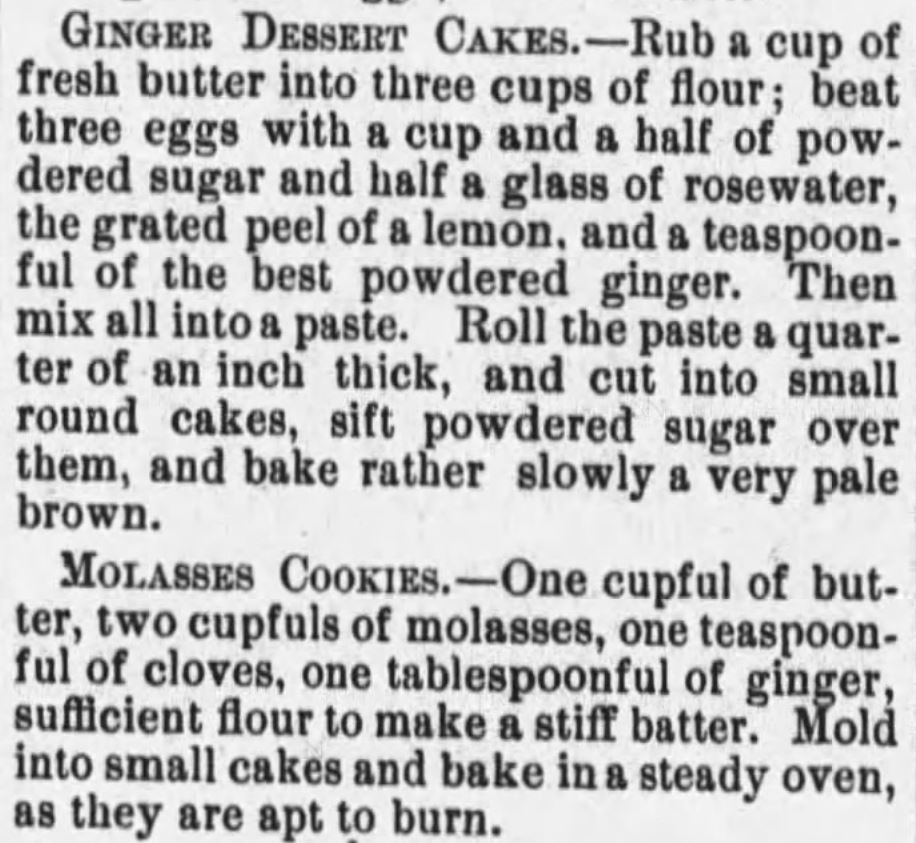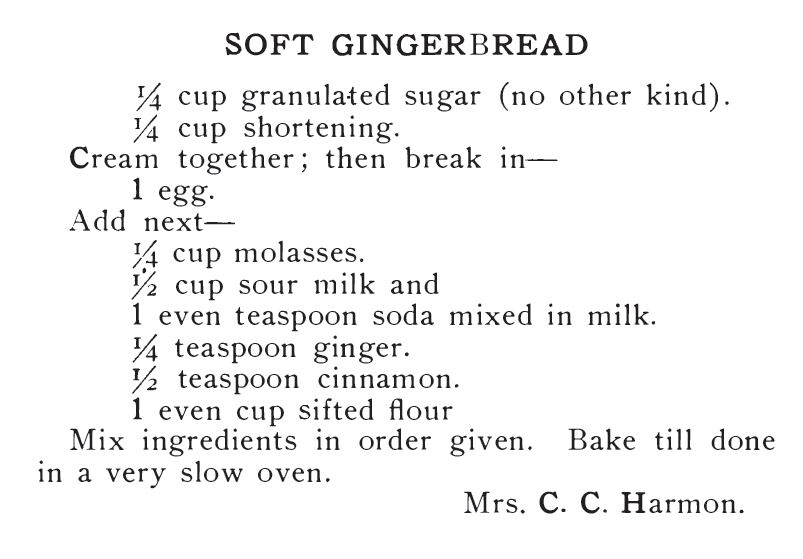Victorian Gingerbread Recipes
I love gingerbread. Gloriously fragrant and ever-so-Victorian gingerbread houses. White icing and gumdrops. Crisp gingersnap cookies, sparkling with sugar crystals. I love the aroma, the taste, the mouth-feel. And, oh!–the vintage flavors. In other words, I’m a gonner for Victorian Gingerbread Recipes.
Making Victorian Gingerbread Recipes is simple. Maybe not for our great grandmothers, but today, it’s easy for moderately experienced home bakers. Why wait for the winter holidays to bake a batch of ginger snaps or soft gingerbread cake? My mouth is watering as a result.
.

.

Not that my Shakespeare-speak is all that on-point, so to clarify, I believe the famous playwright loved gingerbread too.
Where do you stand with gingerbread? That’s to say, can you stand it? Would you eat it only if starving? Or do you like it? Or love it as much as any self-respecting Victorian-era fan?
.

.
Gingerbread is Delightfully Victorian
.

.
Historical Origins of Gingerbread
The origins of gingerbread are also mysterious, though according to Steven Stellingwerf, author of The Gingerbread Book, it may have been brought to Western Europe by crusaders in the eleventh century, because the ginger root has its origins in Asia, specifically China.
.
.
The cookies often made appearances at medieval European fairs, soon adopting the name “fairings.” Gingerbread houses, interestingly enough, have their origins in Germany, commonly recognized in the Brothers Grimm fairytale Hansel and Gretel.
.
George Washington’s mother, Mary Ball Washington, even had her own special recipe for gingerbread (in a cake form),which can be found here.
.
.

Gingerbread Cookies | Image copyright Freepik; used with paid subscription.
.

.
National Gingerbread Day
Many people are familiar with the gingerbread house at Christmas time, however, there are some delicious gingerbread bread, cake, bars, biscuit and cookie recipes that are perfect any time of the year. Each year on June 5, gingerbread lovers across the nation observe National Gingerbread Day, a day that was created to bring attention to gingerbread.
.
The term “gingerbread” originally referred to preserved ginger, later referring to a confection made up of honey and spices.
.
Gingerbread is a sweet food that typically uses honey or molasses rather than just sugar and is flavored with ginger. Gingerbread foods range from a soft, moist loaf cake to something closer to a ginger biscuit.
.
It is believed that gingerbread was first brought to Europe in 992 by an Armenian monk. He lived there for seven years teaching gingerbread cooking to the French priests and Christians until his death in 999.
.
Sources indicate that in 1444, Swedish nuns were baking gingerbread to ease indigestion.
.
In the 17th century, gingerbread biscuits were sold in monasteries, pharmacies and town square farmers markets. During the 18th century, gingerbread became widely available.
.
Source: National Day Calendar
.

.
Not to be confused with Gingerbread House Day
According to National Day Calendar, December 12 is Gingerbread House Day. Gingerbread is so tasty it’s worth celebrating on more than one day each year. As a result, confusion– or in other words, more opportunities to bake scrumptious gingerbread. Thus I recommend baking gingerbread at least twice this calendar year. Indeed, behave like a Victorian and put Gingerbread on the dessert menu rotation.

“Dream House”, Nuvo Gingerbread Architecture. Source.

Portion of an image, copyright Freepik; used with subscription.
.

.
Likewise, Not to be Confused with “Gingerbread” Dripping from Victorian Eaves

Victorian Gingerbread architectural elements. Image: Pinterest.

How to Decorate Victorian Houses with Gingerbread Trim Patterns. Image: Pinterest.
As an illustration of the oh, so Victorian “gingerbread” wooden lattices and spindles on late 19th-century construction, see these Pinterest photos.
.

.
True-to-History Victorian Gingerbread Recipes (United States)
Here they are! Victorian Gingerbread Recipes!

Fresh ginger root, image copyright Freepik.com; used with paid subscription.
1850s

Soft Gingerbread recipe, published in The Cadiz Sentinel of Cadiz, Ohio on May 21, 1851.

Soft Gingerbread Recipe published in The Message of Greensboro, North Carolina on November 29, 1851.

Polka Gingerbread Recipe, published in The Weekly Mississippian of Jackson, Mississippi on April 2, 1852.

Hard and Soft Gingerbread recipes, from The Sunbury Gazette and Northumberland County Republican of Sunbury, Pennsylvania on April 24, 1852.

Three gingerbread recipes, including “Boston Gingerbread”, published in New England Farmer of Boston, Massachusetts on September 18, 1852. (Part 1 of 2)

Three gingerbread recipes, including “Boston Gingerbread”, from New England Farmer of Boston, Massachusetts on September 18, 1852. (Part 2 of 2)

Soft Gingerbread Without Eggs, published in Every Lady’s Cook Book, 1854.

Molly’s Gingerbread Recipe, published in The Buffalo Daily Republic of Buffalo, New York on October 26, 1855.
1870s

Ginger Cookies and Ginger Snaps, published in The Home Messenger Book of Tested Recipes, 2nd Edition, 1878, by Isabella Stewart.

Four more Ginger Cookies and Ginger Snaps recipes, published in The Home Messenger Book of Tested Recipes, 2nd edition, 1878, by Isabella Stewart.
1880s

Sponge Gingerbread, published in The Burlington Free Press of Burlington, Vermont on September 12, 1881.

Gingersnaps and Gingerbread, published in Our New Cook Book and Household Receipts, 1883.

Ginger Biscuits, published in Our New Cook Book and Household Receipts, 1883.

Thick Gingerbread, published in Our New Cook Book and Household Receipts, 1883.

Soft Gingerbread, published in Our New Cook Book and Household Receipts, 1883.

Berkshire Cookies Recipe, published in The Iola Register of Iola, Kansas on April 12, 1889.
1890s

Ginger Dessert Cakes and Molasses Cookies, two recipes published in Vermont Journal of Windsor, Vermont on February 22, 1890.
1900s

Soft Gingerbread, published in Dr. Sloan’s Cook Book and Advice to Housekeepers, 1905.

Soft Gingerbread, published in Our Favorite Recipes, 1907.
.

.
Conclusion
Victorian Americans had the basic ingredients for gingerbread on hand. Consequently, gingerbread cake and gingerbread cookies became a frequent favorite of Victorian-American housekeepers (homemakers / home cooks). This historical article has shown the 1800s-long (and into the 1900s) love affair with gingerbread, thanks to good cooks everywhere who shared their secrets.
Above all, these Victorian-American gingerbread recipes reveal much about ingredient availability, preferences, and more. For instance, sugar quantities tend to be less (or very much less) in Victorian than in modern recipes.
I’m old enough, I suppose, and enough of a nineteenth century geek to find gingerbread spectacular. As a result of gathering these details I’m prepared to turn on the gas range and whip up a batch of gingersnaps.
.

Recipe: Favorite Old Fashioned Gingerbread
Courtesy of AllRecipes.com
.

.
.
Related Blog Articles
.
.

.
Great GINGERBREAD products!
.

.
Updated July 2022
Copyright © 2019 Kristin Holt LC


























Awesome